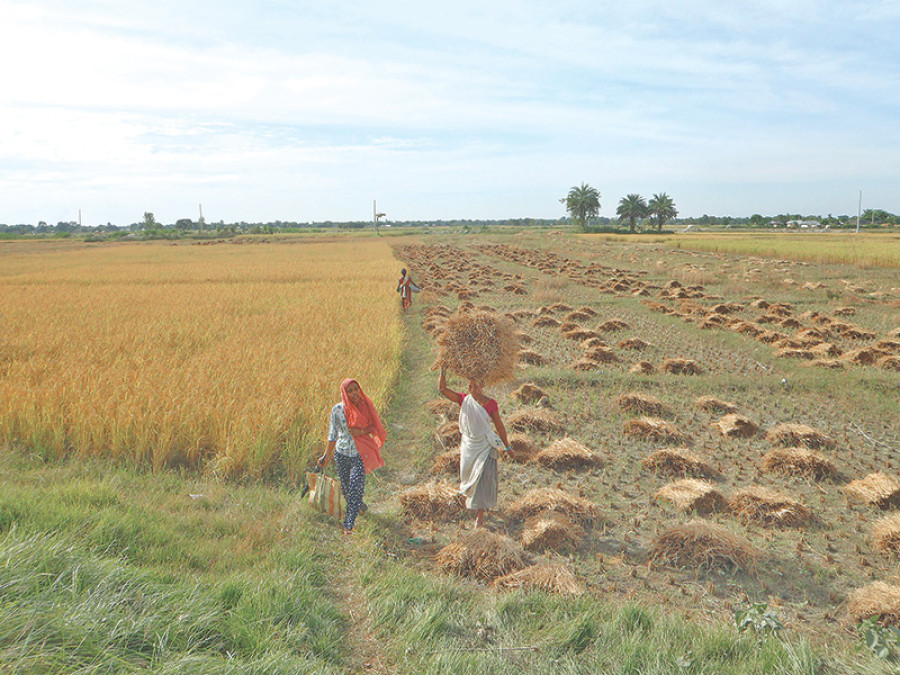Money
Paddy harvest in East set to increase by 10 percent
Paddy production in the eastern region, the country’s food basket, has been projected to swell 10 percent this year despite the damage caused to farms by the August floods, the regional Agricultural Development Office said.
Lila Ballav Ghimire
Paddy production in the eastern region, the country’s food basket, has been projected to swell 10 percent this year despite the damage caused to farms by the August floods, the regional Agricultural Development Office said.
Last year, the 16 districts in the eastern region produced 1.61 million tonnes of paddy. The paddy acreage here totals 446,000 hectares. “Although paddy transplantation in the eastern region was down a little this year, higher productivity has led to output being better than expected,” said Rajendra Upreti, an agriculture extension officer.
This year, paddy was transplanted on only 410,000 hectares, or 83 percent of the available land, due to floods. “The floods, however, have not affected production.” According to him, floods and inundation destroyed standing paddy crops on 2,500 hectares only.
The country suffered record floods following torrential rains from August 11-14 that inundated huge tracts of land in 31 districts. Initially, the government had estimated that the summer paddy output would be hit severely as transplantation had been completed on 95 percent of the 1.5 million hectares of paddy fields. Paddy acreage has shrunk this year, but output may be higher that last year as the silt and nutrients brought by the floods will boost productivity, government officials said. Farmers have completed harvesting paddy on 20 percent of the fields in the eastern region. Saptari is one of the most flood-affected districts. In Siraha, transplantation was completed on 70 percent of the land. In Morang, paddy transplantation was done on 65,000 hectares.
Similarly, transplantation was carried out on 50,000 hectares in Sunsari, 77,000 hectares in Jhapa, 43,000 hectares in Siraha and 60,000 hectares in Saptari. According to the office, paddy cultivation was completed on 24,000 hectares in the eastern mountain region and 92,000 hectares in the hilly region. Thanks to adequate rainfall, all these regions are likely to produce good harvests.
Meanwhile, the country’s food basket has been facing a new kind of threat. Land plotting and spreading urbanization has led to the loss of vast tracts of fertile fields to construction. The building boom has raised the risk of food insecurity in the eastern region.
In the last five years, more than 25,000 hectares of land in Morang has been converted into housing plots. Arable lands are being buried under concrete mainly in Biratnagar, Budiganga, Belbari, Pathari, Urlabari, Sundar Haraicha, Kerabari and Letang, among other areas.
The farm sector’s contribution to the country’s gross domestic product (GDP) amounted to Rs691.2 billion in the last fiscal year. Paddy accounts for 20 percent of the total agricultural output.
In the last fiscal year, the country achieved a 23-year-high economic growth rate of 6.9 percent on the back of a good monsoon that boosted agricultural output. Nepal’s farm sector registered a nine-year-high growth rate of 5.32 percent.




 22.12°C Kathmandu
22.12°C Kathmandu















